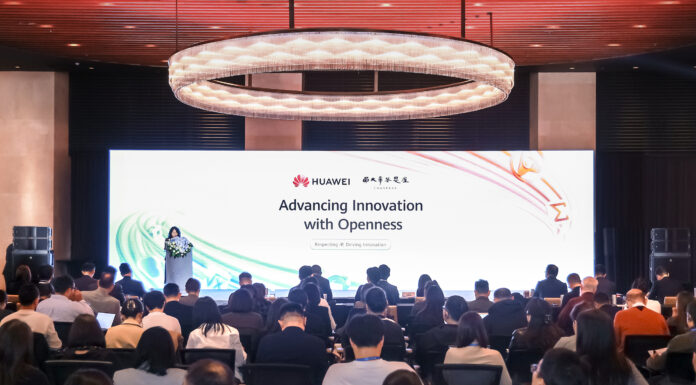Revealed at the recent Intellectual Property (IP) Forum in Beijing, Huawei’s latest edition of the Top 10 Inventions Awards highlights the company’s commitment to pushing technological boundaries. Each innovation on the list represents a step forward in making advanced technology more accessible, efficient, and secure, reflecting Huawei’s ongoing investment in research and development and its influence on the future of digital infrastructure.
Since 2015, the program has recognized and rewarded inventions with the potential to pioneer new product lines, become key commercial features, and deliver significant business value across both the company and the industry. This year’s selected breakthroughs span intelligent computing, operating systems, next-generation storage, optics, wireless networks, smart devices, and autonomous mobility.
-SuperPoD: Reimagining ultra-large-scale AI computing
Among this year’s flagship innovations is the Scale-Up Ultra-Large-Scale SuperPoD Computing Platform, a significant architectural breakthrough for AI infrastructure. The invention uses a high-speed interconnect bus to form a fully peer-to-peer system that combines heterogeneous parallel processors, CPUs, memory, storage, and more into one shared and flexible resource pool.
This unified architecture allows hundreds to thousands of AI processors to operate together like a single computer. Depending on workload requirements, resources can be allocated and composed like building blocks, ensuring efficient scaling and utilization. As AI models grow in complexity and computing demands rise across industries, the SuperPoD platform stands out as a critical step forward in enabling large-scale, high-performance intelligent computing.
-Next-generation SSD: Capacity and performance for the data-driven era
Another high-impact breakthrough receiving focused attention is Huawei’s Next-Generation SSD with Ultra-High Capacity and Performance. By integrating advanced packaging technology with co-optimized hardware, software, and chips—along with algorithmic innovations—the invention delivers a fourfold increase in the capacity density of storage systems.
The SSD also introduces major performance improvements and supports hour-scale recovery of hundreds of terabytes of data, an essential feature for data-intensive and mission-critical operations. As organizations accelerate their adoption of AI, analytics, and high-throughput digital services, this breakthrough provides a more efficient and reliable foundation for storing, accessing, and processing vast datasets. It also represents an important advancement for the global solid-state storage industry.
-HarmonyOS: Full-stack architectural innovation
Huawei’s HarmonyOS features prominently on the list with a full-stack redesign that delivers a smoother and more secure experience across all-scenario applications. Central to this is the Ark Engine, which introduces technological breakthroughs that optimize coordination among software, hardware, and ecosystem services. The HarmonyOS Security Architecture adds a system-level encrypted sharing mechanism that gives users fine-grained control over their data, even when it leaves their device.
-Engineering breakthroughs in foldables
Huawei continues to lead the foldable device category through a series of foundational innovations across precise hinges, flexible screens, heat dissipation systems, and system architecture. These advancements enable the world’s first commercial tri-fold smartphone, maintaining exceptional thinness at just 3.6 mm, while the company’s largest commercial foldable PC offers a smooth full-screen experience and a unique virtual keyboard with tactile haptics and productivity-focused features.
Additional Top 10 innovations include:
-Short reach optical interconnect, an optical-electrical innovation that improves cluster reliability threefold, extends coverage by 12 times, and increases O&M efficiency by 40%.
-GigaGreen RAN, reducing base station energy consumption by 30%, increasing integration by 30%, enhancing network experience by 20%, and cutting interference by 25 dB.
Fixed 5G-Advanced – 50G PON Technology, supporting high-performance, short-preamble, cost-effective, and highly reliable optical access.
-A new paradigm for assisted driving, integrating standard maps with real-time sensing to reconstruct road structures and detect obstacles dynamically.
-Ascend-aware inference acceleration, using mathematical innovation to maximize inference performance for Ascend-based LLMs.
-Ultra chroma camera, a multi-spectral imaging system designed to reproduce true-to-life colors.
Huawei’s sixth top 10 inventions lineup reflects not only a set of engineering achievements but also the company’s strategic focus on the critical technologies shaping intelligent infrastructure. With landmark innovations such as the SuperPoD computing platform and next-generation SSD, Huawei continues to build a foundation for the next era of AI, connectivity, and digital transformation.

